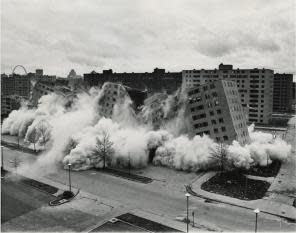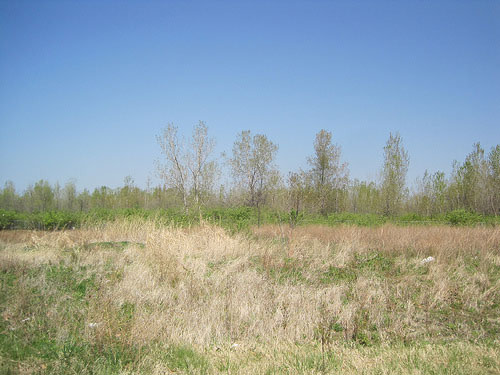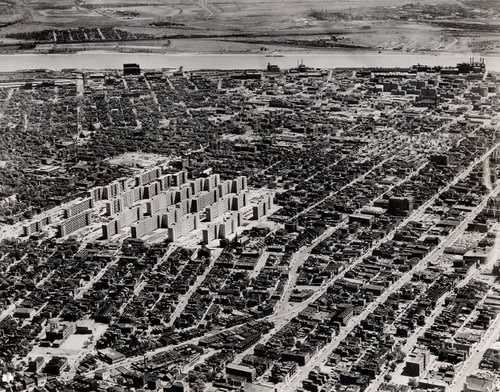What Next at Pruitt-Igoe?

Pruitt-Igoe towers being detonated: an iconic, and ironic, image of modern architecture.
Image: Courtesy of Atlantic Cities
Pruitt-Igoe. It's a housing project in St. Louis – one of the most famous in American architectural history. Or rather, infamous: the project is known for being demolished, not for being constructed. The photographs of its then less than 20 year old high rise buildings being imploded in the 1970s are some of the most iconic images of modern architecture – modern architecture gone wrong.
The 33 towers were built in 1955 on 57 acres in North St. Louis. Most of that site is still abandoned today, forty years after the buildings were destroyed. What should be there now? The "Pruitt-Igoe Now" design competition asked that question, and many possible answers are now on display at Portland's chapter of the American Institute for Architects.
About the project and its destruction, the competition sponsors tell us: in March 1972, the "St. Louis Housing Authority demolished the first of thirty-three high rises of the Pruitt-Igoe housing project through detonation. One month later, the agency demolished a second tower. These highly-publicized and well-documented events were not supposed to usher the end of the notorious housing project, but to foster its rebirth. Instead these incidents would become trauma that has never been resolved for St. Louis, or for the nation."

The site now: most of it has been vacant more than 40 years, and is home to dense, urban native species of forest.
Image: Courtesy of Pruitt-Igoe Now
Even after forty years, the "rebirth has never arrived. The spectacle of the detonations created momentum toward the accelerated death of Pruitt-Igoe, and led to public sentiment against high-rise housing and even modernist architecture. For decades, architects and historians have mythologized Pruitt-Igoe’s failure as the “death of modernism,” and have placed the blame on the architects, Helmuth, Yamasaki and Leinweber, for problems that are now known to be the result of complex political and economic circumstances. Minoru Yamasaki himself expressed his belief that the project was a failure, and made no mention of it in his autobiography. The architect’s own last word on Pruitt Igoe, like the site itself, is a void.
That architect's name, Yamasaki? That's the same Yamasaki whose better-known project, the World Trade Towers, were destroyed under entirely different circumstances in 2001.

Pruitt-Igoe in context in St. Louis in its heyday. The affordable housing project was completed in 1955, a time when the prevailing theory of city-building was to tear down old buildings and build new "towers in a park."
Image: Courtesy of Pruitt-Igoe Now
This style of urban "renewal" (development = out with the old, in with the new) happened in Portland at a smaller scale during the same period, for instance in the Southwest Portland area around the Keller Auditorium and Lawrence Halprin-designed squares, and the Memorial Coliseum area that used to be part of the Albina neighborhood. Before the super blocks of urban renewal, the Auditorium area had fit seamlessly into the city fabric, a neighborhood of gridded streets lined with homes and businesses of a special Italian and Jewish flavor.
Pruitt Igoe and Other Architectural Fictions
The exhibit will be showing through December 21, 2012.
A discussion moderated by Portland State University Architecture Department Assistant Professor Nora Wendl (who helped run the competition and curate the exhibit) will take place Thursday, November 29th, 2012, 7-9pm.
Exhibit and lecture are located at:
AIA Portland | Center for Architecture
403 NW 11th Avenue
Portland, Oregon 97209
503.223.8757




